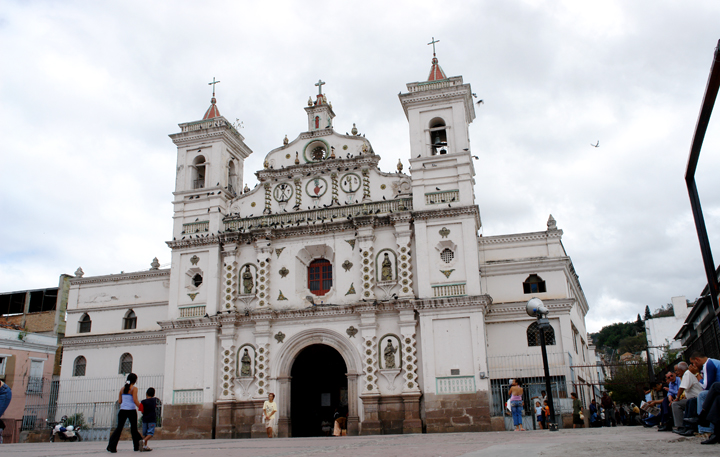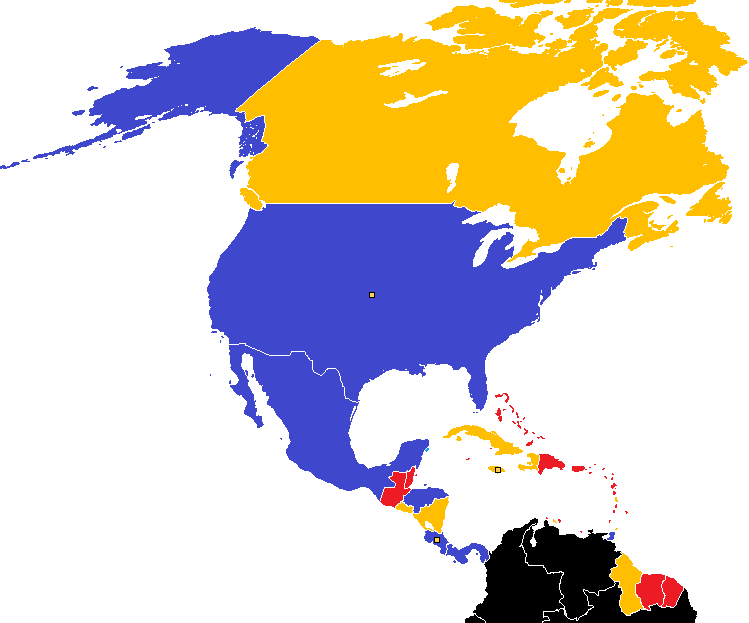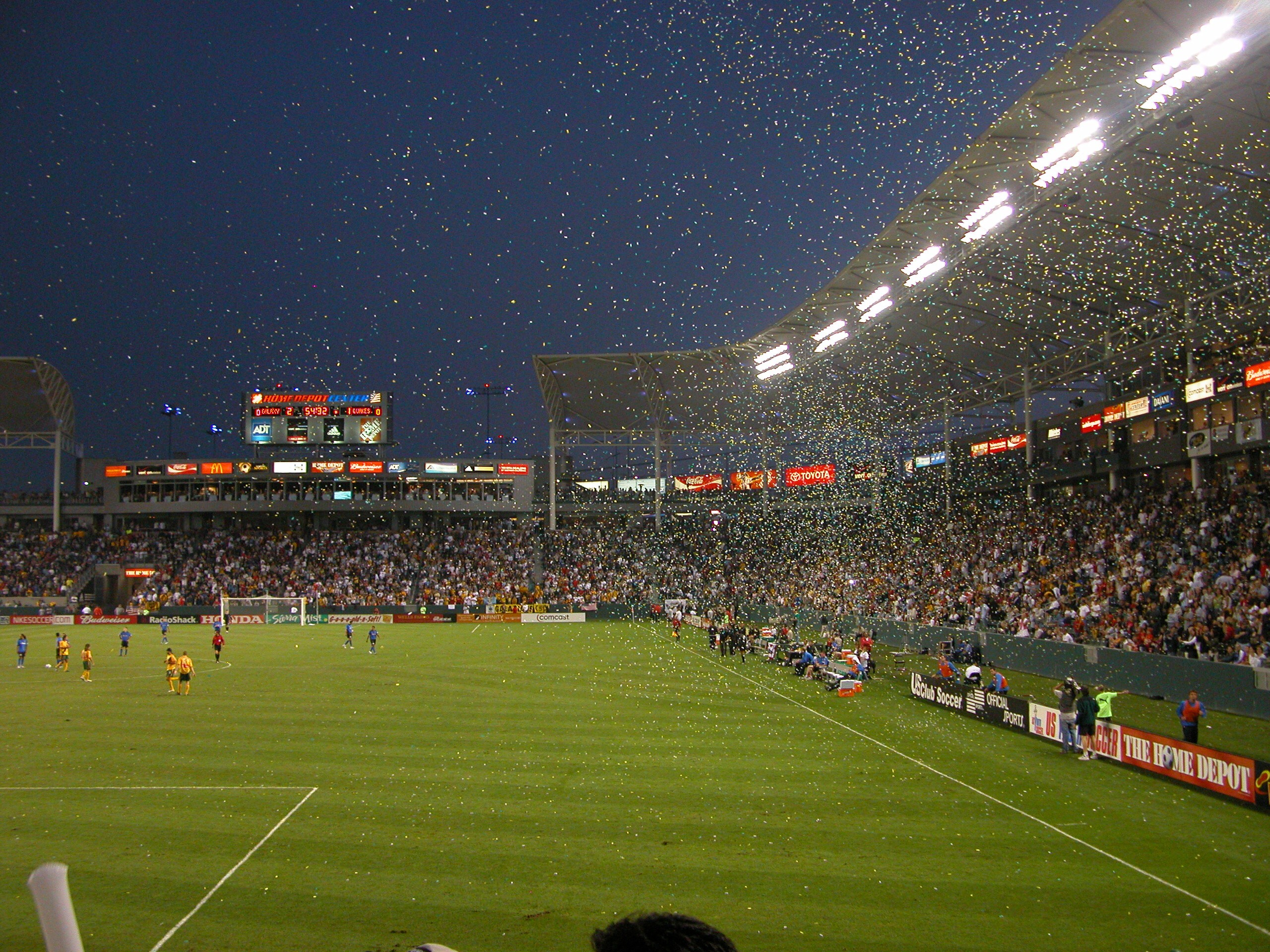|
Juan Barrera
Juan Ramón Barrera Pérez (born 2 May 1989) is a Nicaraguan professional footballer who plays as a midfielder for Liga Primera club Real Estelí and captains the Nicaragua national team. Club career Nicknamed ''el Iluminado'', he started his professional career at Real Estelí, then had a couple of seasons at Walter Ferretti. In summer 2011 he moved abroad to play for Panamanian outfit Tauro for whom he would play 8 league matches. In February 2012, he rejoined Estelí from Tauro. In 2013, he became the second Nicaraguan footballer to play in a CONMEBOL First Division, when he was sent out on loan to Deportivo Petare of the Venezuelan Primera División for a six-month stint. He rejoined Estelí in summer 2013. In early March it was announced that Barrera had signed with Austrian first division team SC Rheindorf Altach becoming the first Nicaraguan to play in Europe Comunicaciones On December 23, 2015, Barrera joined Comunicaciones of the Liga Nacional. Barrera was a p ... [...More Info...] [...Related Items...] OR: [Wikipedia] [Google] [Baidu] |
Real Estelí FC
Real Esteli Fútbol Club is a Nicaraguan football club playing in the top flight of Nicaragua's league system, the Campeonato Nacional de Fútbol de Primera División. The club play out of their home stadium, Estadio Independencia, based in the northern city of Estelí. Real Estelí has 18 national championships, second most out of every team in Nicaragua, only trailing Diriangén. They also won a CONCACAF record eight consecutive championships from 2006 to 2014. History The club was founded in 1960 as Estelí FC, adding Real to its name in 1961. Estelí FC plays at the Estadio Independencia, one of the biggest stadiums in Nicaragua, with a capacity of 4,800. The club is known by the nickname, ''El Tren del Norte'' (''Train of the North''), coming as it does, from the northern region of Las Segovias. Real Estelí has finished in the top five of Nicaragua's top flight every year since 1986. In that time, they have also achieved traditionally high attendance numbers. How ... [...More Info...] [...Related Items...] OR: [Wikipedia] [Google] [Baidu] |
CONMEBOL
The South American Football Confederation (CONMEBOL, , or CSF; es, Confederación Sudamericana de Fútbol; pt, Confederação Sul-Americana de Futebol) is the continental governing body of football in South America (apart from Guyana, Suriname and French Guiana) and it is one of FIFA's six continental confederations. The oldest continental confederation in the world, its headquarters are located in Luque, Paraguay, near Asunción. CONMEBOL is responsible for the organization and governance of South American football's major international tournaments. With 10 member soccer associations, it has the fewest members of all the confederations in FIFA. CONMEBOL national teams have won ten FIFA World Cups (Brazil five, Argentina three and Uruguay two) and CONMEBOL clubs have won 22 Intercontinental Cups and four FIFA Club World Cups. Argentina, Brazil and Uruguay have won two Olympic gold medals each. It is considered one of the strongest confederations in the world. The Wo ... [...More Info...] [...Related Items...] OR: [Wikipedia] [Google] [Baidu] |
Bayamón Soccer Complex
The Bayamon Soccer Complex is a complex of 2 soccer fields and one 1,000-capacity stadium located in Bayamon, Puerto Rico that is host to several teams of the San Juan–Caguas–Guaynabo metropolitan area. Youth, middle school, high school, and adult recreational soccer is held at the complex. Field 1 is home to Bayamón FC, a member of the Liga Puerto Rico. Fields Bayamon Soccer Complex I Fields 1 & 2 is centrally located serving multiple neighborhoods in the city of Bayamon; being Minillas, Tio, Reparto Zarina, and Vista Bella. Being a couple miles to the south of Bayamon Soccer Complex 2. The field 1 is a professional sized soccer field and field 2 is a recreational sized soccer field with a small youth sized field for youth teams attached to the west. Bayamon Soccer Complex II Field 3 is also known by ''Parque de Futbol Honda'' by the community or ''Honda Soccer Park'' in English it is located in the Rio Hondo neighborhood of Bayamon. The field is a professional sized ... [...More Info...] [...Related Items...] OR: [Wikipedia] [Google] [Baidu] |
Tegucigalpa
Tegucigalpa (, , ), formally Tegucigalpa, Municipality of the Central District ( es, Tegucigalpa, Municipio del Distrito Central or ''Tegucigalpa, M.D.C.''), and colloquially referred to as ''Tegus'' or ''Teguz'', is the capital and largest city of Honduras along with its sister city, Comayagüela. Claimed on 29 September 1578 by the Spaniards, Tegucigalpa became the country's capital on October 30, 1880, under President Marco Aurelio Soto, when he moved the capital from Comayagua. The Constitution of Honduras, enacted in 1982, names the sister cities of Tegucigalpa and Comayagüela as a Central District to serve as the permanent national capital, under articles 8 and 295. After the dissolution of the Federal Republic of Central America in 1841, Honduras became an individual sovereign nation with Comayagua as its capital. The capital was moved to Tegucigalpa in 1880. On January 30, 1937, Article 179 of the 1936 Honduran Constitution was changed under Decree 53 to establis ... [...More Info...] [...Related Items...] OR: [Wikipedia] [Google] [Baidu] |
Estadio Tiburcio Carias Andino
A stadium ( : stadiums or stadia) is a place or venue for (mostly) outdoor sports, concerts, or other events and consists of a field or stage either partly or completely surrounded by a tiered structure designed to allow spectators to stand or sit and view the event. Pausanias noted that for about half a century the only event at the ancient Greek Olympic festival was the race that comprised one length of the stadion at Olympia, where the word "stadium" originated. Most of the stadiums with a capacity of at least 10,000 are used for association football. Other popular stadium sports include gridiron football, baseball, cricket, the various codes of rugby, field lacrosse, bandy, and bullfighting. Many large sports venues are also used for concerts. Etymology "Stadium" is the Latin form of the Greek word " stadion" (''στάδιον''), a measure of length equalling the length of 600 human feet. As feet are of variable length the exact length of a stadion depends on the exac ... [...More Info...] [...Related Items...] OR: [Wikipedia] [Google] [Baidu] |
2019 CONCACAF Gold Cup
The 2019 CONCACAF Gold Cup was the 15th edition of the CONCACAF Gold Cup, the biennial international men's soccer championship of the North, Central American, and Caribbean region organized by CONCACAF. The tournament was primarily hosted in the United States, with Costa Rica and Jamaica hosting double-headers in the first round of matches in groups B and C, respectively. The United States were the defending champions, having won the 2017 tournament. With the abolition of the FIFA Confederations Cup, the CONCACAF Cup was annulled and the Gold Cup did not qualify the winner to a major tournament for the first time since 2009. In February 2018, CONCACAF announced that the tournament would expand to 16 teams from 12. Mexico won their eighth Gold Cup title (their eleventh CONCACAF championship) with their 1–0 victory over the United States in the final. Qualified teams The qualification system was changed and no longer divided into Central American and Caribbean zones. Amo ... [...More Info...] [...Related Items...] OR: [Wikipedia] [Google] [Baidu] |
2017 CONCACAF Gold Cup
The 2017 CONCACAF Gold Cup was the 14th edition of the CONCACAF Gold Cup, the biennial international men's soccer championship of the North, Central American and Caribbean region organized by CONCACAF, and 24th CONCACAF regional championship overall. The tournament was played between July 7–26, 2017 in the United States. The United States won their sixth title with their 2–1 victory over Jamaica in the final. Qualified teams A total of twelve teams qualified for the tournament. Three berths were allocated to North America, four to Central America, four to the Caribbean, and one to the winners of the play-off between the two fifth-placed teams of the Caribbean zone and the Central American zone. Bold indicates that the corresponding team was hosting the event. 1. This was Curaçao's first appearance since the dissolution of the Netherlands Antilles, as its direct successor (with regards to membership in football associations), inheriting the former nation's FIFA membersh ... [...More Info...] [...Related Items...] OR: [Wikipedia] [Google] [Baidu] |
2009 CONCACAF Gold Cup
The 2009 CONCACAF Gold Cup was the tenth edition of the CONCACAF Gold Cup competition, and the twentieth soccer championship of North America, Central America and the Caribbean (CONCACAF). It was played from July 3 to 26, 2009 in the United States. This competition was the fourth tournament without guests from other confederations. Mexico won their fifth Gold Cup, and eighth CONCACAF Championship overall, after beating the United States 5–0 in the final. It was the second consecutive Gold Cup final and fourth overall to feature Mexico and the United States and the third won by Mexico. Qualified teams A total of 12 teams qualified for the tournament. Three berths were allocated to North America, five to Central America, and four to the Caribbean. Notes: Venues The set of thirteen venues—the largest number ever used to stage the Gold Cup—was announced on March 9. Squads Participating teams selected a squad of 23 players (including three goalkeepers), e ... [...More Info...] [...Related Items...] OR: [Wikipedia] [Google] [Baidu] |
2011 UNCAF Nations Cup
The 2011 Copa Centroamericana ( en, 2011 Central American Cup) was the eleventh edition of Copa Centroamericana (formerly known as the UNCAF Nations Cup), an international football championship for national teams affiliated with the Central American Football Union (UNCAF) of the CONCACAF region. It took place in Panama from January 14 to January 23, 2011. It was the second time for Panama to host the tournament. On January 23, 2011 Honduras won the cup by defeating Costa Rica 2-1 in the final. The top five teams from this tournament qualified for the 2011 CONCACAF Gold Cup. The group stage draw was conducted on September 2, 2010 in Panama City. Participating nations All seven UNCAF members participated in the tournament: * * * * * * * Venue All matches were played at Estadio Rommel Fernández in Panama City. Squads Group stage ;Tiebreakers # Greater number of points in matches between the tied teams. # Greater goal difference in matches between the tied teams ... [...More Info...] [...Related Items...] OR: [Wikipedia] [Google] [Baidu] |
FIFA World Cup Qualification
The FIFA World Cup qualification is a competitive match that a national association football team takes in order to qualify for one of the available berths at the final tournament of the (men's) FIFA World Cup. Qualifying tournaments are held within the six FIFA continental zones, each organized by their respective confederations: AFC (Asia), CAF (Africa), CONCACAF (North and Central America and the Caribbean), CONMEBOL (South America), OFC (Oceania), and UEFA (Europe). For each World Cup, FIFA decides the number of places in the finals allocated to each of the zones, based on the numbers and relative strengths of the confederations' teams. As a courtesy, the host receives an automatic berth selection, as has happened with the immediate past tournament winner during much of the competition's history. All other finalists are determined on a standalone qualifying round achievement without regard to previous achievements. History The berths for the inaugural 1930 tourname ... [...More Info...] [...Related Items...] OR: [Wikipedia] [Google] [Baidu] |
El Salvador National Football Team
The El Salvador national football team ( es, Selección de fútbol de El Salvador) represents El Salvador in international football, and is governed by the Salvadoran Football Federation (FESFUT). In 1899, two teams from Santa Ana and San Salvador met for the first known football game in El Salvador. The national team's first match was played in September 1921, when they were invited to participate in a tournament to celebrate 100 years of Central American Independence. El Salvador has made two FIFA World Cup appearances: first in 1970 and again in 1982, but have never progressed beyond the first stage of a finals tournament. They were the 1943 CCCF champions, and finished in second-place in the 1941 and 1961 championships. They have competed in the CONCACAF regional tournaments fourteen times, finishing as runners-up in 1963 and 1981. ''La Selecta'' also competes in the biennial UNCAF Nations Cup, the Pan American Games, the Olympics, and have won two gold medals in ... [...More Info...] [...Related Items...] OR: [Wikipedia] [Google] [Baidu] |







